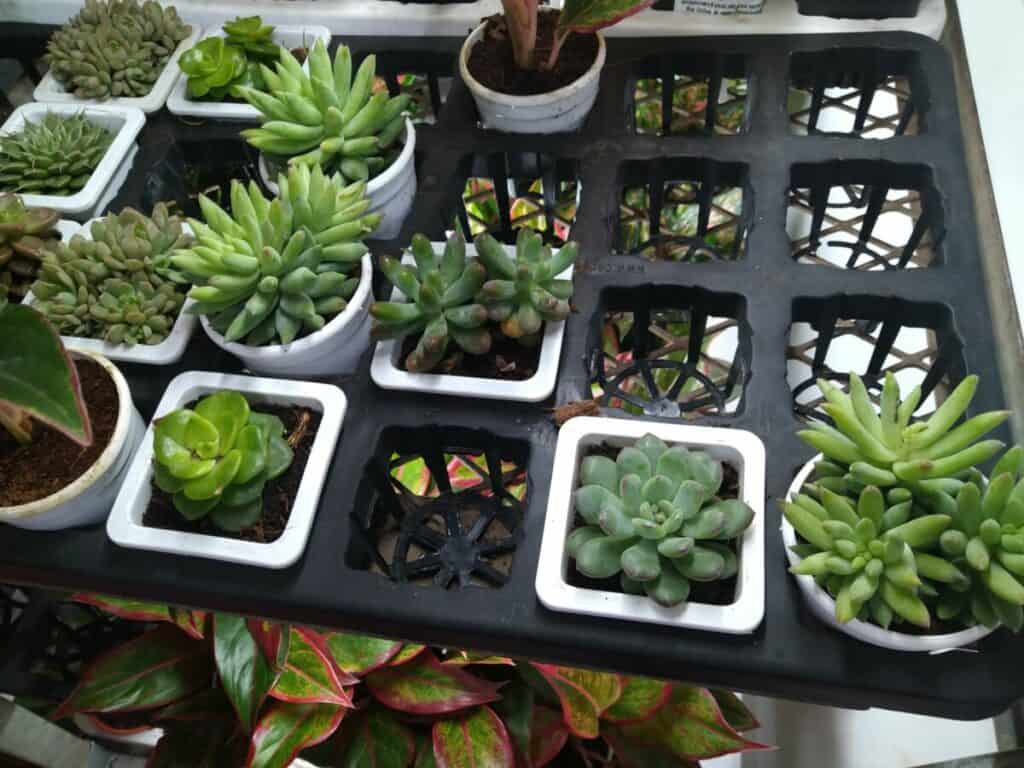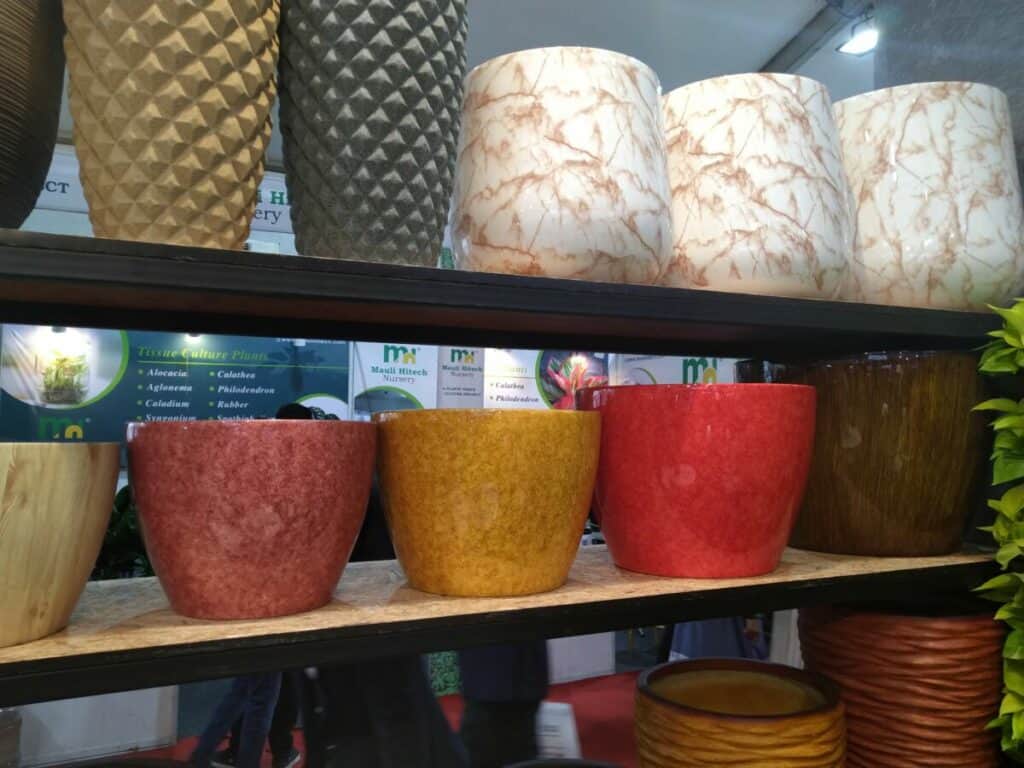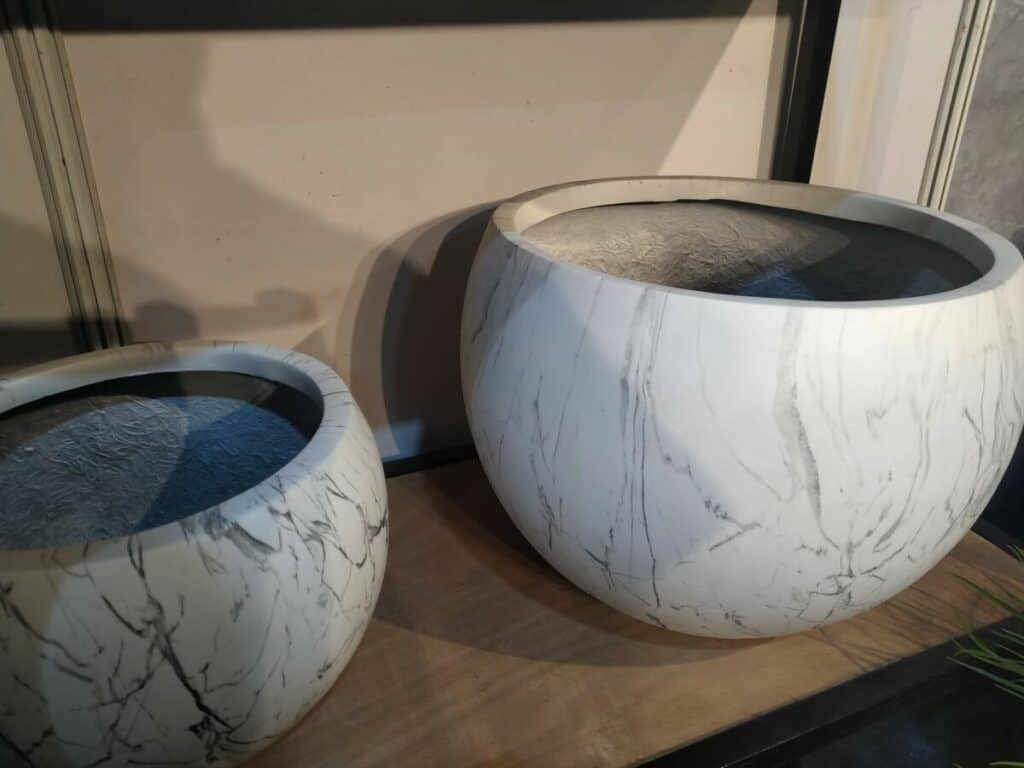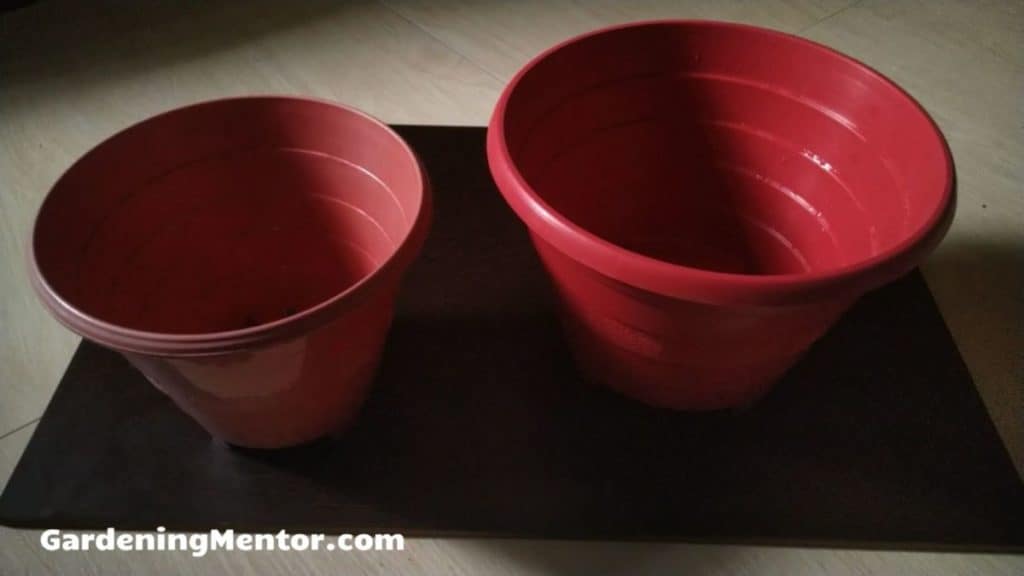Let’s say you made the big move and headed off to a bustling metropolitan city and have found your dream apartment. Although it is everything you want, there is little room for gardening. Smaller pots for your plants, however, could make gardening a bit more possible.
Plants do not grow faster in smaller pots. Instead, they grow better in pots that are 1-2 sizes larger. You need to use a pot that gives the plant sufficient growing space for the roots. If the pot is very small, the plant becomes root bound and can’t get enough nutrients, moisture, and oxygen.
Plants are somewhat like people in that they need space to thrive. If you were to cram nine adults into one elevator, it would not be comfortable, right? This same conclusion can be made for plants. Although it may seem like a space saver in the long run, potting plants in too small of a pot can quickly end the life of your garden grower. There is no need to be excessive with space, just be sure to give your plant enough room to stretch its roots.
What Happens if Your Pot is too Small?
So you have found the most perfect plant. It is filled with blooms, its stems look as if they are stretching constantly to the blue sky to be warmed by the sweet spring sun, and its leaves glisten blissfully after a light rain, however, the pot has got to go.
The pot your plant was purchased in is much too big for your tiny terrace, but you think a compromise can be made. You pop it into a smaller container, but weeks later your beautiful plant begins to pale. What gives?
Soil is as essential to a plant as its roots, stems, and leaves are. Plants need good soil in the same way that they need proper sunlight and water. Because of this, smaller pots tend to offer fewer nutrients for the plant due to their smaller size.
This then constricts the roots and essentially can starve them. By giving more space in the pot, you allow a larger range of nutrition to your plant and thus give them a better chance at thriving.
A smaller pot also means less room for growth. Do you remember the feeling when you were going from kid to teen and your twin bed all the sudden began to feel like more of a tiny closet than a resting place?
This is how it works for plants in small pots. Roots need room to grow, stretch, and breathe. If there is not enough room in the pot, the roots will start to compact on one another and will not have enough room to get the nutrients they need to grow.
How to Tell if Your Pot is too Small
If you are unfamiliar with working with potted plants, then you might be unsure of how to appropriately size your pots. To tell if your pot is too small for your plant, consider doing these two things:
- Check the Bottom of the Pot
- Check the Soil
If you decided to opt-out of the big pot in order to save space and your plant is beginning to look a little lackluster, you may have run into a pot sizing problem. Don’t beat yourself up over it, every gardener has made their fair share of mistakes. This one may be your first, but certainly will not be your last. Lucky for you, plants are relatively forgiving and are capable of snapping right back with the right care.
To know if you have too small of a pot, look first at the bottom of your pot. If you see roots coming out of the bottom, then your pot needs to be upgraded in size as your roots are looking for another room to board in.
You can also take a look at the soil. If your water seems to dry very quickly, then there is not enough room for the soil to contain the right amount of water. Space is needed in order to absorb proper hydration for your plant.
Can a Pot be Too Big for a Plant?
Now that you know that plants need plenty of room to grow, it may seem impossible that a pot could be too big. Although at first glance this may seem like a non-existent problem, pots that are too big can in fact have a negative effect on your plant. Think of this as the story of “Goldilocks and the Three Bears,” but with pots – you don’t want your pot too big or too small, but just right.
Too small of a pot can sometimes keep the soil from retaining enough water to keep the plant hydrated, with too big of a pot, you have the opposite problem. If your container is too large, the larger amounts of soil within it can hold too much soil, which keeps the soil too damp.
If your soil is too wet, this can create mold within the soil itself and cause your plants to begin to rot. As it turns out, there can in fact be too much of a good thing, for plants, that is water.
Too large of a pot can also keep your soil from being tightly packed. You want those roots to sit in a nice and cozy bed that has them tucked in well from all sides. If the soil is too loose, you risk the chance of them not being able to grasp onto the nutrients within the soil that they desperately need in order to be nourished and grow well. This is easily tested by sticking your finger straight into the soil. If it is too easily budged, then the soil is too loose.
How to Choose the Right Pot for Your Plant
I wish there was an answer to the question that fits every plant across the board, but there simply is not. However, this is not too difficult of a task. You want your pot to reflect the size of the plant you plan to contain, but you should also consider the size of the roots that will come from your plant. Some plants are smaller, but their roots are relatively big in comparison and you want the pot to be able to accommodate the growth of the roots rather than the leafy parts.
Keep in mind that many plants bought from stores and even nurseries are not in the proper size pot. Most of these plants come in containers that are too small in order to account for shelving space and shipping accommodations. Be sure to remove your plant from that temporary container to one that gives it ample room to spread its roots.
To know if your pot is giving your plant plenty of space, look at how it absorbs water. If you water your plant the proper amount and no water comes out from the bottom, it may be too large. If water absolutely gushes from the sides, it may be too small. You want just a small amount of water to come off of the plant when you are finished. Again, not too much, not too little, but just the right amount.
Keep in mind that some plants require very little water, such as succulents. This method then cannot be used to appropriate the size of the pot, so be sure to consult any tag that has come with your water saving plant. Many times, proper planting guidelines can be found on the tags placed on each plant within the store or nursery. Keep your eyes open and consult this if you feel unsure.

If you find that your pot is getting way too small for your plants, a general rule is to double the pot size that your plant is currently in. This allows room for the existing roots to sit in but also allows plenty of space for them to extend and grow longer and wider.
Once they have grown, the doubled size should allow enough space between the root, the sides of the pot, and the bottom of the pot to keep from crowding.
How to Choose the Material of Your Pot for Your Plant
There are so many options available when it comes to the material of pots. However, each has its own advantages and disadvantages. The best way to go about choosing the right pot is to consider where the pot will stand in or outside your home and the aesthetic you are looking to achieve when the pots have taken their place.
Ceramic pots are a great option as they are not too porous, but allow enough water to escape to keep from rotting, however, they are quite heavy. Terra cotta pots are the most common, as they are very versatile, affordable, and work either inside or outdoors. They are more easily broken and are unglazed which can lead to a higher level of exposure to the elements.

For something more natural, Coir is a great option. Coir is made from coconut husks and thus offers a fantastic ecological option. These pots are sturdier than your average paper pot, but since they are made of natural fibers, may not last a lengthy amount of time.
If you are wanting something very durable though, fiberglass and resin planters are likely your best bet. These pots are made from a mix of resin and glass fibers, helping them to be very durable and easily molded to look like different materials.

Of course, outside of the most natural and the least, you have your wood and plastic containers. Wood is great for outdoor settings and creates a nice natural look, but the wear on wood, when exposed to the elements, can be rapid. Plastic is obviously very durable and affordable.


Fact Checked, Written, and Published by Kevin Rodrigues
Kevin is the founder of Gardening Mentor, a website that aims to teach people to grow their own food in a limited space. As a self-taught gardener, Kevin has spent several years growing plants and creating gardening content on the website. He is certified in Home Horticulture and Organic Gardening from Oregon State University. He has a Post Graduate Diploma in Horticulture and Landscape Gardening from Mumbai University.
Read more
